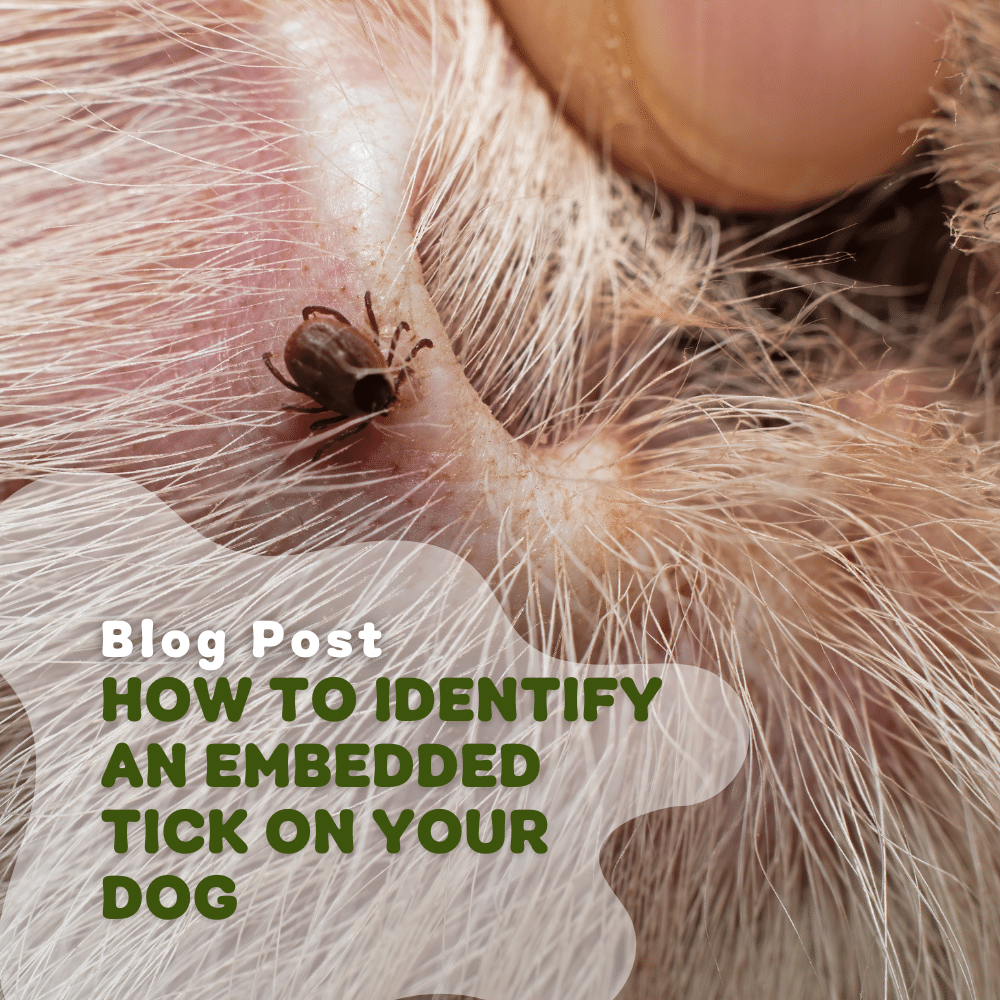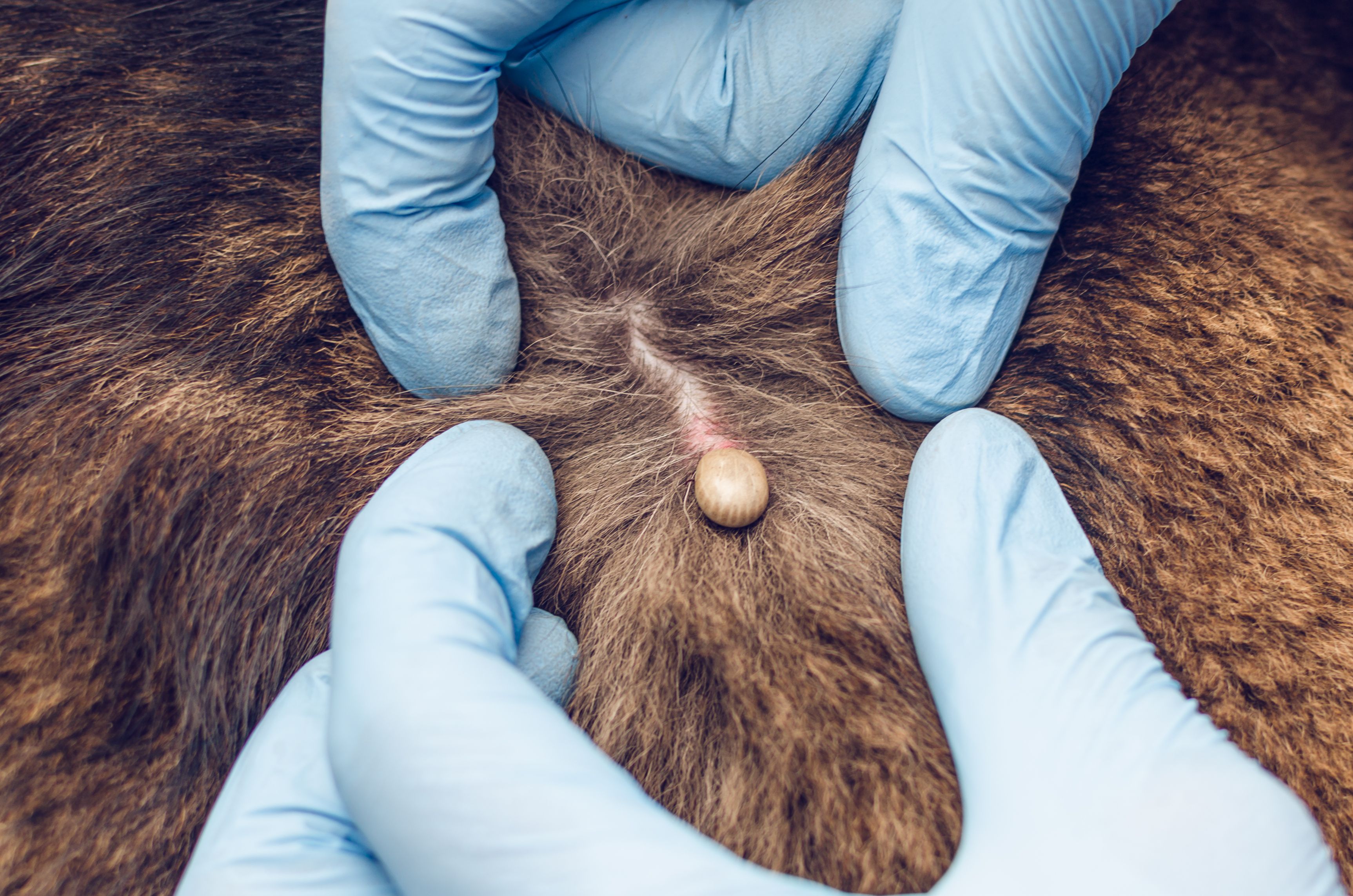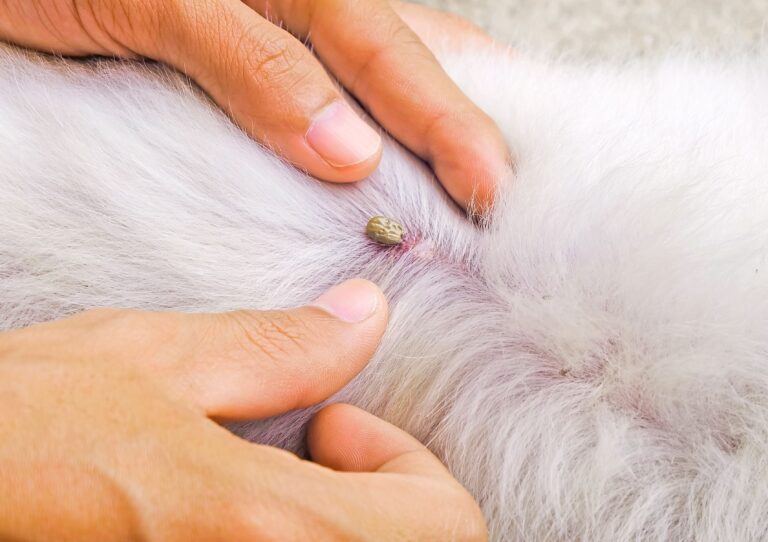An embedded tick on a dog looks like a small, dark, raised bump on the skin. It may be mistaken for a mole or a skin tag.
Ticks can range in size from a pinhead to a pencil eraser and may become engorged with blood. Ticks are parasites that attach themselves to the skin of animals, including dogs. Identifying and promptly removing embedded ticks is important for preventing disease transmission.
We will discuss the appearance of embedded ticks on dogs, how to locate and safely remove them, and the potential risks associated with tick bites. Understanding how to identify and deal with ticks on your dog is essential for maintaining their health and well-being.
Symptoms Of An Embedded Tick On A Dog
When it comes to protecting our furry friends, knowledge is key. Recognizing the symptoms of an embedded tick on a dog can help you take prompt action to remove the tick and prevent potential health issues. In this article, we will discuss the visible signs of an embedded tick as well as any behavioral changes you may notice in your four-legged companion. Being aware of these symptoms will enable you to provide the necessary care your dog needs.
Visible Signs Of An Embedded Tick
If you suspect your dog has an embedded tick, it’s important to carefully examine their body. Look for the following visible signs:
- Small, brown or black bump on the dog’s skin
- Presence of a tick body, legs, or mouthparts
- Redness or inflammation around the tick bite
- Swelling or tenderness in the affected area
While ticks can attach themselves anywhere on a dog’s body, they are commonly found in areas with less fur such as the ears, neck, groin, and between the toes. However, it’s essential to thoroughly check your dog’s entire body, including under the fur, to ensure no ticks have gone unnoticed.
Behavioral Changes In Dogs With Embedded Ticks
In addition to visible signs, dogs may also exhibit behavioral changes when they have an embedded tick. Keep an eye out for the following behaviors as they may indicate a tick infestation:
- Excessive scratching or licking of a particular area
- Restlessness or irritability
- Loss of appetite or reduced food intake
- Lethargy or decreased energy levels
While these behavioral changes can be attributed to various factors, if you notice any combination of these symptoms along with visible signs of an embedded tick, it’s crucial to consult your veterinarian for further guidance.
Remember, prompt action is necessary when dealing with an embedded tick on your dog. If you have any concerns or are unsure about removing the tick yourself, it’s best to seek professional help. Your veterinarian can safely remove the tick and provide appropriate treatment to prevent any potential complications.

Credit: bubblepawz.com.au
Dangers And Risks Of Embedded Ticks On Dogs
Dangers and Risks of Embedded Ticks on Dogs
Embedded ticks on dogs pose significant dangers and risks to their health. These tiny parasites can lead to a variety of tick-borne diseases, and the risk of infection and transmission is a valid concern for pet owners. It is crucial to understand the potential dangers and take necessary precautions to protect your furry friend from the adverse effects of embedded ticks.
Tick-borne Diseases
Embedded ticks on dogs can transmit various tick-borne diseases such as Lyme disease, ehrlichiosis, anaplasmosis, and Rocky Mountain spotted fever. These diseases can cause symptoms ranging from mild discomfort to severe illness, impacting the overall well-being of the dog.
Infection And Transmission Risks
- When ticks embed themselves in a dog’s skin, they can transmit infectious agents into the host’s bloodstream.
- Some ticks can transmit multiple diseases simultaneously, amplifying the infection risks.
- It is essential to promptly remove embedded ticks to minimize the chances of infection and transmission.
Removing An Embedded Tick Safely
Removing an embedded tick safely is crucial for your dog’s health and well-being. It’s important to act promptly and with care to prevent any potential infections or complications. Here’s a step-by-step guide to safely removing an embedded tick from your dog.
Tools And Supplies Needed
Before starting the removal process, gather the following:
- Fine-Tipped Tweezers – to grasp the tick firmly at the mouthparts.
- Antiseptic Wipes – to clean the area after removal.
- Gloves – to protect yourself from potential exposure to tick-borne diseases.
Step-by-step Removal Process
Follow these steps to safely remove an embedded tick from your dog:
- Prepare: Put on gloves and gather the necessary tools and supplies.
- Position: Hold your dog steady in a comfortable position, ensuring good lighting.
- Grasp: Using the fine-tipped tweezers, grasp the tick as close to the skin’s surface as possible.
- Remove: Gently pull upward with steady, even pressure. Avoid twisting or jerking to prevent mouthpart breakage.
- Clean: After removing the tick, clean the bite area with antiseptic wipes.
- Dispose: Place the tick in a sealed container or bag for disposal.
- Monitor: Keep an eye on the bite area for any signs of infection or inflammation.

Credit: www.prevention.com
Preventing Embedded Ticks On Dogs
Embedded ticks on dogs can be visually identified as small, dark, raised bumps on their skin. Regular tick checks and prevention methods are essential to keep your furry friend tick-free and healthy.
Tick Prevention Products For Dogs
Tick prevention is an essential part of keeping your furry friend safe and healthy. Preventing embedded ticks on dogs can help avoid potential diseases and discomfort for your pet. One effective way to prevent tick infestations is by using tick prevention products specifically designed for dogs. These products are formulated to repel ticks and prevent them from attaching to your dog’s skin. Here are some popular tick prevention products for dogs: 1. Tick collars: Tick collars are worn around your dog’s neck and release tick-repelling chemicals that spread through their fur, creating a protective barrier. These collars are easy to use and provide long-lasting protection.2. Topical treatments: Topical treatments are applied directly to your dog’s skin, usually between their shoulder blades. These treatments contain insecticides that kill ticks upon contact and continue to provide protection for several weeks.3. Tick sprays: Tick sprays can be used to treat your dog’s fur, bedding, and favored outdoor areas. These sprays contain chemicals that repel ticks and can help create a tick-free environment for your furry friend.4. Tick shampoos: Tick shampoos are specially formulated to kill ticks on contact and effectively remove them from your dog’s coat. Regularly bathing your dog with tick shampoo can help prevent tick infestations.Tick Control Techniques For Outdoor Environments
Ticks are commonly found in outdoor environments, especially in grassy and wooded areas. To prevent ticks from infesting your outdoor environment and potentially attaching to your dog, consider the following tick control techniques:1. Keep your lawn and outdoor areas well-maintained: Regularly mow your lawn, trim tall grasses, and remove leaf litter, as these are common habitats for ticks. This reduces the likelihood of ticks coming into contact with your dog.2. Create a tick-free zone: Consider creating a designated area in your yard that is less attractive to ticks. This can be achieved by creating a barrier with gravel or wood chips, as ticks are less likely to inhabit these areas.3. Use tick control products for your outdoor environment: There are tick control products specifically designed for outdoor areas, such as tick control sprays or granules. These products help eliminate ticks from your yard and create a safer environment for your dog.4. Regularly check your dog for ticks: After outdoor activities, thoroughly inspect your dog’s fur for ticks. Pay close attention to their ears, neck, and underbelly, as ticks tend to attach in these areas. Promptly removing any ticks can help prevent them from becoming embedded in your dog’s skin.Remember, prevention is key when it comes to protecting your dog from embedded ticks. By using tick prevention products for dogs and implementing tick control techniques in your outdoor environment, you can keep your furry friend safe and tick-free.When To Seek Veterinary Care For An Embedded Tick
When to Seek Veterinary Care for an Embedded Tick
If you discover an embedded tick on your dog, it is important to know when to seek veterinary care. While some cases can be managed at home, there are situations where professional intervention is necessary. Understanding the signs that indicate the need for veterinary care can help ensure the health and well-being of your furry friend. Here are a few scenarios where seeking veterinary attention is crucial:
When Home Remedies Are Not Effective
If you have attempted various home remedies to remove an embedded tick from your dog and they have failed, it is time to consult a veterinarian. While some methods like using tweezers or tick removal tools may work in most cases, there will be instances where the tick’s mouthparts remain intact or the tick regurgitates into your dog’s bloodstream. In such situations, it is best to have a professional handle the situation to minimize the risk of further complications.
Recognizing Symptoms Of Tick-borne Diseases
Ticks are notorious for transmitting various diseases, such as Lyme disease, ehrlichiosis, and anaplasmosis, to dogs. If you notice any unusual symptoms in your dog after the removal of an embedded tick, it is crucial to seek veterinary care promptly. Some common symptoms of tick-borne diseases include fever, loss of appetite, lethargy, joint pain, lameness, and swollen lymph nodes. Recognizing these symptoms is vital in getting your dog the necessary treatment to prevent the disease from progressing and causing further harm.
Remember, ticks are not to be taken lightly as they can significantly impact your dog’s health. By understanding when to seek veterinary care for an embedded tick, you can ensure your beloved pet receives the appropriate treatment and attention they need.

Credit: pethelpful.com
Frequently Asked Questions Of What Does An Embedded Tick On A Dog Look Like
What Does An Embedded Tick On A Dog Look Like?
The appearance of an embedded tick on a dog can vary depending on its stage of engorgement. Initially, it may be tiny and flat, resembling a freckle or a small scab. As it feeds, it becomes engorged and can resemble a small dark bump or a swollen sac, with its legs embedded in the skin.
Conclusion
Ticks can pose a serious threat to the health of our furry friends, especially when they embed themselves in their skin. It’s important for dog owners to be able to recognize what an embedded tick looks like in order to promptly remove it and prevent any potential complications.
By knowing the signs and symptoms and taking necessary precautions, we can ensure the well-being and happiness of our beloved pets. Stay vigilant, keep your dogs safe, and remember to consult with a veterinarian if you ever have any concerns.



